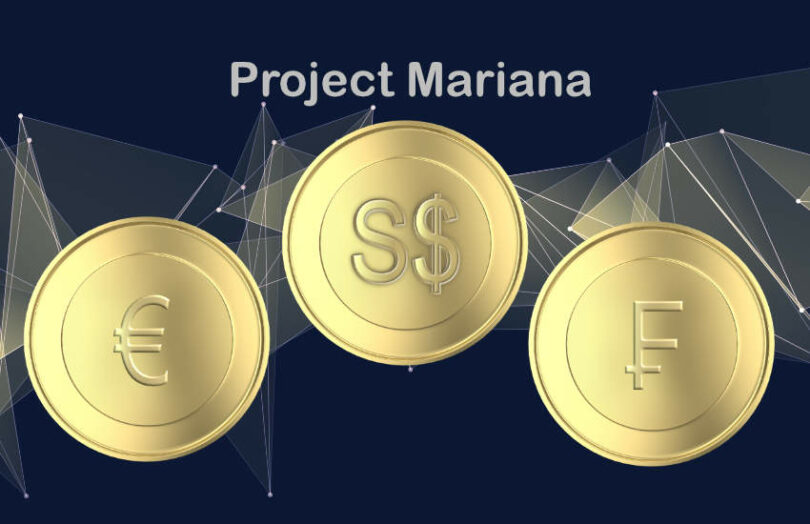Today the BIS Innovation Hub published the final report on Project Mariana, a wholesale CBDC experiment for foreign exchange (FX) and cross border CBDC payments. The project used a combination of public and permissioned blockchains as well as DeFi automated market makers (AMM) to enable commercial banks to make cross border payments using wholesale CBDC (wCBDC). The central banks involved were the Banque de France, the Swiss National Bank and the Monetary Authority of Singapore (MAS).
The foreign exchange market isn’t just the largest market at $7.5 trillion daily, it’s also the one with the most settlement risk. Blockchain enables almost instant settlement or payment versus payment (PvP) which could help to address these significant risks. However, automated market makers (AMM) could increase liquidity requirements.
Project Mariana involves one bank, say in France, requesting wholesale CBDC from the central bank. The commercial bank would then use the central bank’s bridge to move the wCBDC from the permissioned domestic network onto the public blockchain. There it exchanged the digital euro for wholesale Singapore dollars using the AMM. And transferred those to the Singapore bank for onward payment.
Project Mariana Key findings
As observed in June’s interim report on Project Mariana, one takeaway was that a central bank can implement governance at the token level without having control of the public blockchain, the Ethereum testnet. Ethereum’s ERC-20 token standard supported the interoperability of the different wholesale CBDCs.
In this final report, the increased liquidity requirements of AMMs were noted.
Conventional FX markets use market makers and bids and offers to arrive at prices. In contrast, automated market makers use liquidity pools or buckets of the two currencies. An algorithm determines the transaction pricing. While the original intent of this model was to reduce public blockchain gas charges, it also enables 24/7 automation.
However, these AMM transactions require pre-funding. In contrast, most conventional FX transactions use deferred net settlement.
The 24/7 availability of a wholesale CBDC also creates complexity. One example is how to consistently remunerate different forms of central bank money. Another is the security risks introduced by smart contracts.
To date, public blockchain bridges have been the source of massive financial losses. In 2022 alone $3.1 billion in crypto was stolen via cross chain bridges, according to Chainalysis. The BIS report noted the complexity of implementing bridges. That was despite using Ethereum technology on both the permissioned and public blockchains. Bridges involving a variety of technologies are likely to be far trickier.
The BIS emphasized this was only a proof of concept and doesn’t infer an endorsement of DeFi or any particular technology.
Meanwhile, Mariana isn’t the only CBDC project exploring DeFi and public blockchains. Singapore’s Project Guardian is now on its second iteration.
Update: we added additional details after the initial publication






